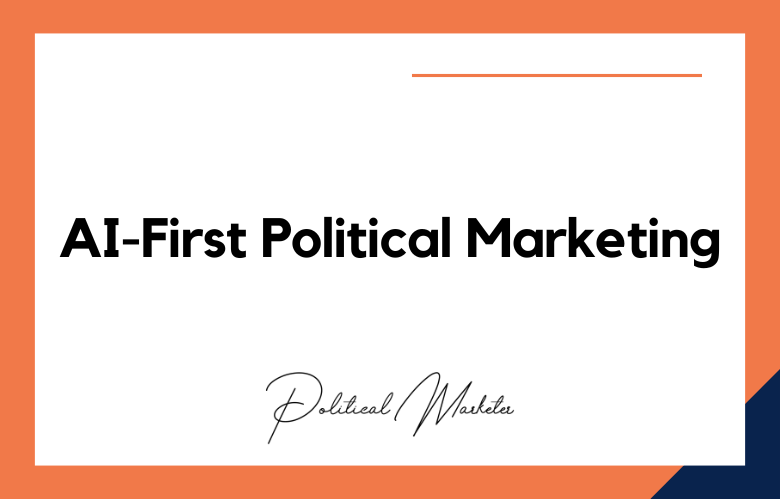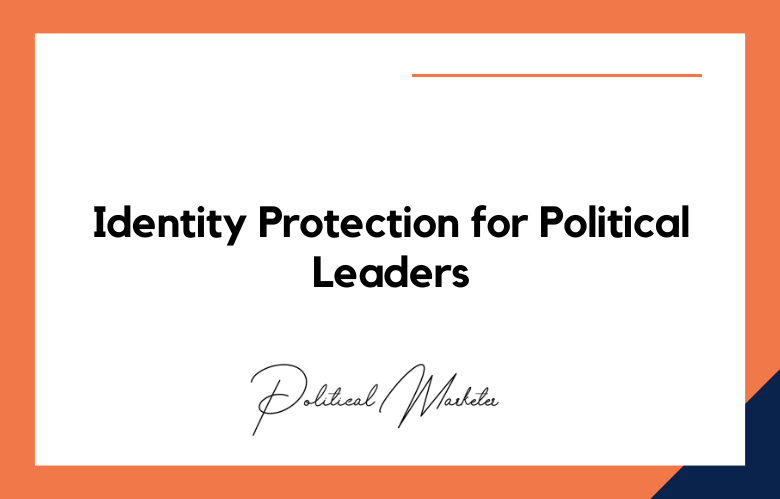In today’s world of politics, a leader’s image can play a defining role in their success. How they present themselves to the public can be the difference between winning or losing an election. AI has now entered the political arena with a powerful tool for image analysis. Advanced algorithms can help us better understand political figures, their image, and how they impact their popularity. We’ll explore how AI analyzes political leader image, its advantages and disadvantages, and what it means for the future of politics.
AI in Political Leader Image Analysis
Enhancing The Image of Political Leaders:
AI image analysis can be used as a tool to refine and enhance the image of political leaders. By analyzing their body language, facial expressions, and tone of voice, the software can suggest ways to improve public speaking skills or identify areas that need improvement. This technology enables political leaders to connect and engage with their audience more effectively, presenting a favorable and trustworthy image that resonates with voters.
Measuring Public Opinion:
Using AI in image analysis also significantly impacts measuring public opinion towards political figures. Analyzing social media posts, news articles, and other media outlets can gauge public opinion toward a political leader. For example, AI can determine how often a political leader has been mentioned on social media and whether the remarks were positive or negative. These metrics provide unparalleled insight to political operatives, enabling them to make informed decisions that shape future political campaigns.
Reducing Biases:
Humans are prone to biases and prejudices, and this can be a challenge for practical political analysis. However, incorporating AI in image analysis can be incredibly useful in eliminating these biases. AI can analyze thousands of data points quickly and accurately without the risk of biases and prejudices clouding analysis. This promotes a more unbiased and rational analysis of political figures, which can lead to unique insights.
The Risks of Misuse:
AI-driven image analysis technology also brings a set of potential risks and downsides. One significant risk is the potential for misuse. By manipulating images or purposely spreading false information, political operatives can use AI to spread propaganda, discredit their opponents, or even drive election results. We must be aware of these risks and the possibility of AI being used unethically in politics.
The Future of Politics:
In conclusion, AI-driven image analysis offers many significant benefits, from refining the image of political leaders to measuring public opinion. It can help to reduce biases and provide a better understanding of political trends. Though the risks of potential misuse exist, the benefits of AI in the political sphere cannot be overlooked. As technology continues to evolve, it will play an even more critical role in shaping the future of politics.
The Role of AI in Assessing Political Leaders Through Image Analysis
Artificial intelligence (AI) has been increasingly applied in various fields of human endeavor, and politics is no exception. With the advent of advanced technology, it is now possible to analyze the images of political leaders and infer valuable insights about their personalities and leadership qualities. AI-based image analysis is now used to assess political leaders’ performance, communication skills, body language, expressions, and reactions to situations.
AI-based image analysis has recently gained significant popularity in the political world. Political leaders are increasingly aware of the importance of projecting the right image to the public and its impact on their popularity and success. AI technology has made it possible to track and analyze the images of political leaders in real time, providing valuable insights into their behavior and performance.
Unlocking the Power of AI: Understanding Political Leaders Through Image Analysis
In today’s digitally-driven world, Artificial Intelligence (AI) plays an increasingly significant role in reshaping various industries, including politics. With its advanced image analysis capabilities, AI can help us better understand political leaders and their beliefs.
Using sophisticated algorithms that can detect micro-expressions, facial gestures, and other non-verbal cues, AI can analyze thousands of images and videos of political leaders and extract valuable insights that can inform us about their personality traits, emotions, and behavioral patterns. For example, by analyzing a politician’s facial expressions during a rally or an interview, AI can detect whether they are confident, angry, or nervous.
Challenging Perceptions: How AI Analyzes Political Leader Images
Artificial intelligence (AI) is a rapidly evolving field impacting multiple facets of our daily lives. One of the many applications of AI is its ability to analyze images, which can provide a unique perspective on political leaders and challenge perceptions.
AI can analyze political leaders’ facial expressions, body language, and other visual cues through advanced machine learning algorithms to gain insights into their thoughts, emotions, and behavior. This analysis is performed by feeding large amounts of data into AI systems, which can then detect patterns and make predictions with a high degree of accuracy.
AI: The Future of Political Leader Image Analysis
Artificial Intelligence (AI) technology has been advancing alarmingly and has significantly impacted various fields, including politics. One area that has experienced this impact is political leader image analysis. AI has made it possible to analyze the image of political leaders more objectively and efficiently, thereby transforming the political world.
Analyzing political leaders’ images in the past relied on subjective and often biased opinions. However, AI technology now makes it possible to analyze visuals objectively through machine learning algorithms. These algorithms can consider various factors, including facial expressions, body language, and vocal tone, and provide a more unbiased and accurate analysis of an individual’s character.
Decoding the Visual Language of Politics: AI and Image Analysis
In today’s world, visual communication shapes public opinion and political discourse. Understanding the underlying visual language of politics has become increasingly important, especially with the proliferation of media platforms and the rise of AI and image analysis capabilities.
AI-powered visual analysis tools can decode complex political messages by extracting features and patterns from visual content. This includes analyzing colors, shapes, and graphic elements and detecting facial expressions, emotions, and gestures. AI algorithms can identify and classify images, videos, and even memes with this data, providing insights into the conveyed narrative.
Beyond Surface Appearances: AI’s Insight into Political Leader Image Analysis
Artificial intelligence (AI) has been increasingly used in various fields, including analyzing images of political leaders. Beyond surface appearances, AI’s insight into political leader image analysis can uncover multiple insights that are not easily discernible by human analysis alone.
One of the key benefits of using AI for political leader image analysis is that it can analyze vast amounts of data in a fraction of the time it would take a human analyst. AI algorithms can create a comprehensive profile of the political leader’s image by analyzing parameters such as facial expressions, tone of voice, body language, and gestures. This can include insights into their emotional state, confidence level, communication skills, and overall likability.
Conclusion:
AI-driven image analysis has the potential to revolutionize political campaigns. By analyzing data points, refining the image of leaders, and measuring public opinion, we can better understand political trends and improve the effectiveness of political campaigns. However, we must remain vigilant about the risks of AI misuse. AI’s responsible and ethical use is crucial for its successful integration into the political arena. Consequently, politicians should welcome AI and invest in its potential to create more transparent and informed politics.
Call: +91 9848321284
Email: [email protected]
AI in Political Leader Image Analysis: FAQs
What Is AI‑Based Image Analysis for Political Leaders?
It is the use of artificial intelligence and computer vision to analyze photos of political leaders to assess their public image, inferred ideology, emotional tone, and visual style.
How Does AI Analyze a Political Leader’s Public Persona?
AI examines features such as facial expression, attire, posture, background context, and visual cues to evaluate persona traits and emotional impression.
Can AI Predict Political Ideology From Leader Images?
Yes. Studies show AI models can infer political orientation (e.g., conservative or liberal) with moderate accuracy based on appearance and image context.
What Types of Visual Data Do Campaigns Use for Image Analysis?
Campaigns collect photographs, social media images, press event stills, public appearances, and profile pictures to analyze visual representation.
How Do AI Models Interpret Facial Expressions?
Models use emotion detection and sentiment analysis to assess affective states—such as confidence, friendliness, seriousness—across public images.
Can Image Analysis Reveal Messaging or Brand Themes?
Yes. AI can identify recurring visual elements or props (e.g. flags, podiums, attire) that reflect messaging priorities and campaign branding.
What Role Do Deep Learning Models Play in Political Image Analysis?
Deep learning networks trained on political imagery help detect nuanced features such as gesture style, image framing, and visual consistency.
How Accurate Is Visual Ideology Detection by AI?
Accuracy varies and may reach moderate reliability across many images when aggregated, but single-image predictions remain probabilistic and imperfect.
How Can Campaign Teams Leverage AI Image Analysis?
They can use it to audit visual branding, refine photo selection, test imagery effectiveness, and diagnose audience visual reactions.
Does AI Image Analysis Capture Cultural or Demographic Differences?
AI can incorporate demographic context, but biases in training data may skew interpretations; cultural sensitivity and diverse datasets are essential.
What Challenges Exist in Political Image AI Models?
Challenges include algorithmic bias, privacy concerns, image interpretability limits, and handling diverse contexts and image quality.
How Do Audiences Typically Respond to AI‑Curated Images?
Well-selected imagery aligned with campaign values can enhance credibility, while mismatched visuals may reduce trust or engagement.
Can AI Detect Subtle Visual Signals Like Symbolism or Props?
Yes. AI can identify symbols such as campaign logos, color schemes, gestures, or objects that communicate ideological or emotional messages.
What Ethical Considerations Apply to AI Image Analysis in Campaigns?
Important issues include avoiding visual stereotyping, ensuring informed consent, maintaining accuracy, and disclosing use of automated tools.
How Should Campaigns Validate AI Image Analysis Outputs?
Teams should cross-check AI output with human judgment, conduct A/B testing, and consult experts before applying imagery strategies.
Can AI Image Insights Influence Debate Prep or Public Appearances?
Yes. AI feedback on image composition or expression style can guide media training, debate visuals, and public presentation strategies.
Are There Privacy Risks When Analyzing Leader Images?
Yes. If images include private settings or personal representation, campaigns must ensure proper consent, secure storage, and compliance with privacy norms.
How Can Campaigns Mitigate Bias in Image Analysis Models?
They should use balanced datasets, include diverse representation, apply fairness checks, and audit model predictions for skewed outputs.
What Is the Research Basis for AI Political Image Analysis?
Academic studies in political science and computer vision validate the feasibility of detecting ideology and persona traits from photos using deep learning.
What Does the Future Look Like for AI Image Analysis in Politics?
Advancements may include multimodal analysis across video, real-time sentiment tracking, better interpretability, fairness auditing, and ethical disclosure practices.










